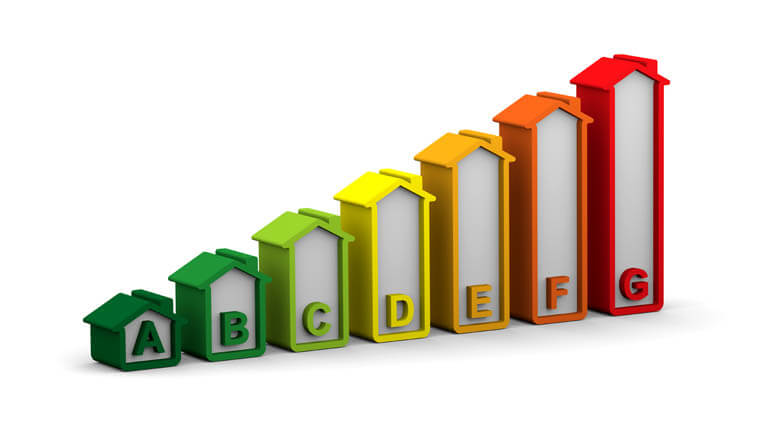20 June 2018
After 18 months of legislative process, the amended Energy Performance of Buildings Directive (EU 2018/844) has been published in the EU Official Journal. Member States now have up to 20 months to transpose it into their national regulations.
The revised EPBD aims to fully leverage the potential contribution of the building sector to the EU’s long-term energy and climate objectives. It requires Member States to strengthen their long-term national renovation strategies to reach a “highly energy efficient and decarbonised building stock” by 2050, an objective that the Modern Building Alliance fully supports.
For the first time, fire safety is mentioned in two paragraphs of the EPBD:
Each Member State may use its long-term renovation strategy to address fire safety and risks related to intense seismic activity affecting energy efficiency renovations and the lifetime of buildings. (new article 2a, paragraph 7)
Member States shall encourage, in relation to buildings undergoing major renovation, high-efficiency alternative systems, in so far as this is technically, functionally and economically feasible, and shall address the issues of healthy indoor climate conditions, fire safety and risks related to intense seismic activity. (article 7 paragraph 5)
This reference to fire safety in the legislation is worth noting as it encourages more attention to be put on the area, along with other risks such as seismic activity.

Fire safety must be considered for all buildings during design, construction, renovation and operation
Like all safety aspects, this is covered by national building codes and a full range of other regulations. The EPBD now highlights that the renovation of a building is also an opportunity to enhance fire safety.
It is well known that old buildings have a poor energy performance, but they may also have obsolete gas and electrical installations and fire safety design. Transformations over the time, like changes in space distribution or addition of electrical equipments, may create higher risk situations.
With regard to electrical safety, new features may represent an increased risk and require a revision of the electrical installation. In the European Union, degraded or faulty electrical appliances make up 20 to 30% of all domestic fires. The majority of these are preventable. Simple precautions, like charging electric vehicles or e-bikes below a smoke detector, can make a difference.
To fully deliver on the objectives outlined in the EPBD, renovations will have to comply with the relevant building regulations and the products will have to meet the performance requirements defined by their specific applications. Ensuring the quality and compliance of renovation works with these rules and with producer guidelines is essential, to meet boththe expected level of safety and of energy performance.
When it comes to fire safety, the Modern Building Alliance encourages Member States to consider the following elements when transposing the directive within their own legislation:
- The quality of the electrical and gas installation and appliances;
- The presence of smoke detection mechanisms;
- The quality of escape routes and compartmentation; and
- The possibility of sprinklers in high-rise/high-risk buildings or for vulnerable occupants.
Fire safety should and can be improved beyond renovation strategies
Despite this development in the EPBD, legislators should realise that building features and renovation will not be enough to improve fire safety.
Protecting EU citizens, particularly those who are most vulnerable, against fire risks must be considered beyond renovation strategies alone. Therefore, the Modern Building Alliance supports the idea suggested by the European Copper Institute and the Federation for the Safety of Electricity Users (Fisuel) that fire and electrical safety should be part of the social dimension of EU energy policy, and be addressed together with energy poverty.
The most vulnerable people in our society, such as elderly and low-income households, are also less likely to see their housing renovated. The revised EPBD encourages Member States to particularly address energy poverty within their renovation strategies, which is positive as vulnerable people affected by energy poverty and safety poverty are the same. But we cannot rely solely on energy renovation to reduce their energy bills and improve their fire safety situation.
Fire prevention measures should develop faster than the renovation rate of maximum 2 or 3% per year. More emphasis should be placed on increasing prevention measures via public awareness programmes regarding fire risks, fire safety behaviours and basic fire safety features like smoke detectors. The Modern Building Alliance supports the work initiated by the Fire Information Exchange Platform (FIEP) on data and best practices which will also help Member States’ efforts in this regard.
As fire safety must be considered beyond renovation of buildings, we also support the European Fire Safety Alliance (EuroFSA) who is aiming to reduce fire risks at home. As explained by EuroFSA, we also believe that most of the residential fires are preventable and it is often the most vulnerable people that are affected. Significant improvements can be achieved by developing knowledge and raising awareness about this issue.
The Modern Building Alliance hopes that Member States will implement the EPBD in a way that grasps Europe’s energy efficiency potential. We also encourage them to work on fire safety improvements beyond renovation strategies to deliver safe and sustainable buildings for all citizens.






